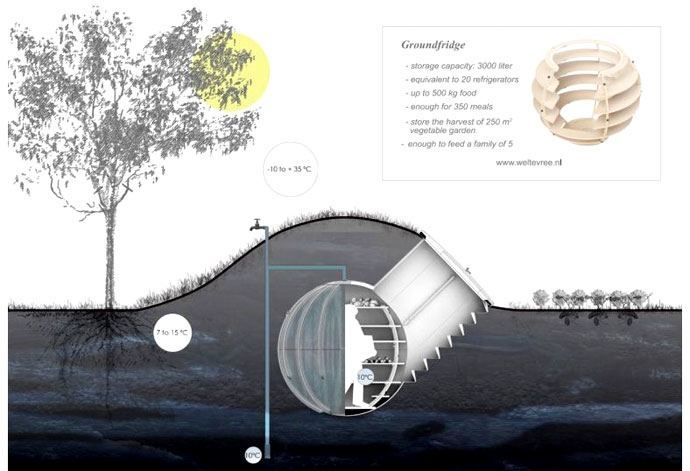It’s a little too big to use for glamping, but the Groundfridge is an environmentally-friendly way to keep food, wine and beer cool without relying on electricity.

Giving new meaning to the term ‘walk-in fridge’, the design is a modern take on the root cellar. Constructed from hand-laminated polyester, you descend into the Groundfridge via a flight of steps to a large storage area that remains at a constant 10 degrees Celsius.

The Groundfridge boasts 3,000 litres of storage, which is equivalent to at least 20 household fridges. It is hoped the self-sufficient refrigerator, which works in air temperatures of between -10 and 35 degrees Celcius, will appeal to small holders. A single Groundfridge can store the harvest of a 250 m-square plot. Find out more at the Weltevree website
DIY off-grid fridge
If you can lay your hands on three garden pots, a little sand, some water and a cloth, you have the makings of an effective cooler.
The ethical choice
The ETA was established in 1990 as an ethical provider of green, reliable travel services. Over 30 years on, we continue to offer cycle insurance , breakdown cover and mobility scooter insurance while putting concern for the environment at the heart of all we do.
The Good Shopping Guide judges us to be the UK’s most ethical provider.

Alan Terrill
This is nothing new -it’s called an ice house and there are loads of them still scattered about in the grounds of stately homes. All that’s new is the use of modern materials, and for $16,000 it’s going to saty in the realm of the rich. You’re going to have to grow an enormous amount of vegetables to save that much on electricity.
Anthony Powell
I think he’s relying most on that damp towel. What I do while camping is drape my damp flannel, towel and anything else damp over my coolbox.
The traditional way was to stand your bottles of milk etc in a saucer of water and invert a clay pot over; water would wick up it. You’d therefore be able to see when more water was needed.